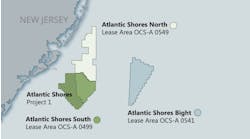Offshore staff
LONDON – Britain’s Oil and Gas Authority (OGA) has hosted its first workshops on offshore power generation integration.
The aim is to foster dialogue between the oil and gas and wind farm power industries on practical ways of cutting greenhouse gas emissions.
At the workshop, operators and representatives of the power generation, oil and gas, and wind farm sectors discussed the feasibility of platform electrification, power supply from wind farms and transmission infrastructure, and technical issues that need to be resolved for projects to go forward.
Recently the OGA published its UK Continental Shelf Energy Integration report and Annexes. These show that integration of offshore energy systems, including oil and gas, renewables, hydrogen and carbon capture and storage, could deliver around 30% of the UK’s total carbon reduction needs to meet the government’s 2050 net zero target.
The OGA estimates that electrification could lessen UKCS oil and gas operational emissions by 2-3Mt CO2/yr by 2030, equivalent to a reduction of the sector’s current production emissions, rising to 40% by 2030.
But to achieve this target, the UK offshore industry should deliver at least two operational electrification projects by the mid-2020s. Opportunities include:
- A wind power supply and transmission link with the UK mainland enabling electrification of new offshore oil and gas projects west of Shetland
- Electrification of existing oil and gas facilities in the Outer Moray Firth off northeast Scotland through connection to wind power developments in the area
- Electrification of central North Sea platforms at a greater distance from the UK shore, potentially via a cross-border power supply from Norway, and floating wind
- Cross-industry co-operations in the southern North Sea, due to closer proximity between wind farms and oil and gas operations.
In addition, the Energy Integration project work identified possible synergies between the oil and gas and renewables industries to deliver economic electrification schemes, such as
- Oil and gas access to lower-cost electricity directly from offshore wind farms, providing commercial opportunities for wind developers to expand
- Reuse of oil and gas infrastructure, including platforms for electricity transmission equipment and onshore terminals as onshore bases
- Gas-to-wire projects help balance electricity supply.
Scott Robertson, OGA Director of Operations, said: “We are very pleased to see real engagement on this from operators, and collaboration with the power sector and investors and are keen to see activity move at pace. The OGA is doing a number of things to support increased pace, including facilitating introductions to develop a critical mass of participants and collaboration across oil/ gas, wind and power sectors and identifying barriers where the OGA can play a role in finding enablers.”
08/25/2020



